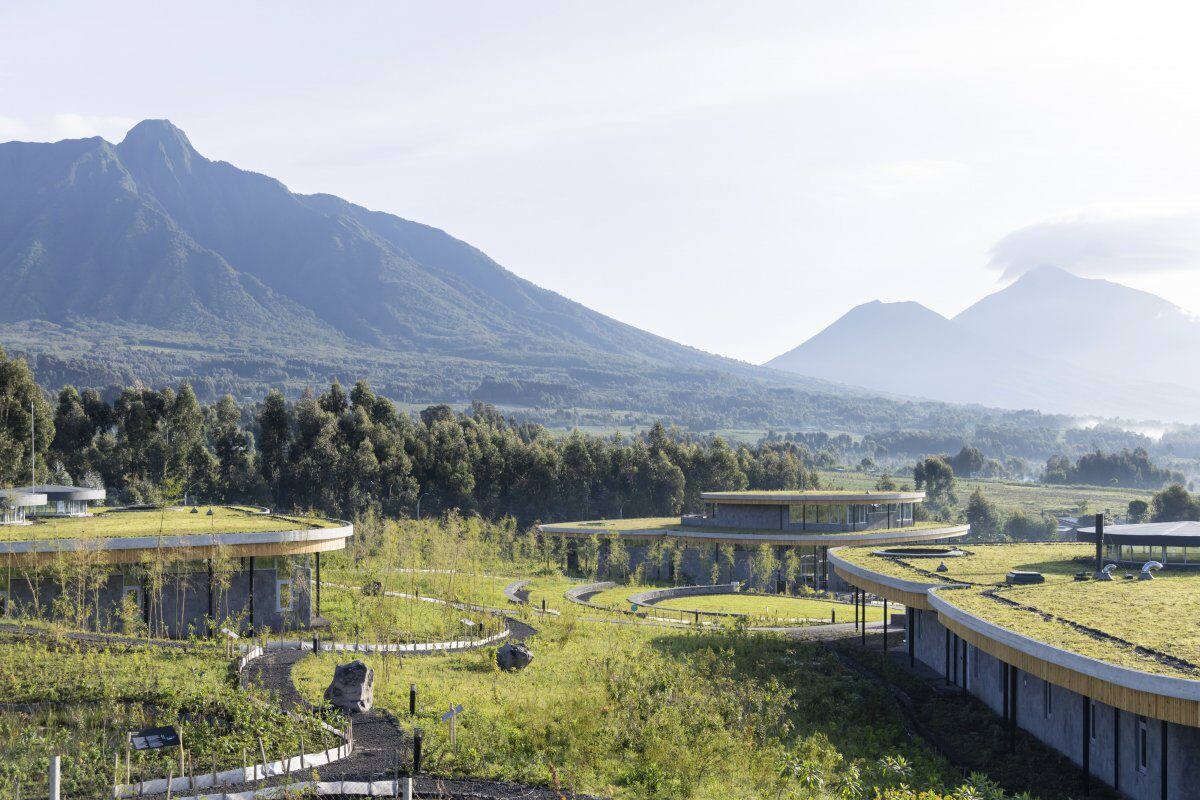“Landscape is a way of beholding that is inclusive of nature and culture, of people and environment,” said Jala Makhzoumi. “It is anchored, it is situated, it is contextualized.” An Iraqi landscape architect based in Beirut, Makhzoumi offered these reflections to encourage expansive thinking about her discipline as part of a two-day conference hosted by the Harvard Graduate School of Design (GSD) and the Department of African and African American Studies. The international participants in “African Landscape Architectures: Alternative Futures for the Field” explored what it would mean for the practice of landscape architecture to be anchored in the continent’s diverse cultures, ecologies, and traditions.
Introducing the conference, organizer Gareth Doherty (DDes ’10), associate professor of Landscape Architecture at the GSD and affiliate of the Department of African and African American Studies, described the tremendous potential to foster landscape architecture as a discipline on the continent as well as the urgency of undertaking socially grounded, culturally relevant design practices there. Doherty was among the speakers who noted that Africa has the youngest population in the world, with approximately 70 percent of people in Sub-Saharan Africa under age 30. By 2050, Africa will be home to some 850 million young people. Such demographic projections underscore the need to create sustainable cities. As Thabo Lenneiye of the University of Pennsylvania observed in her presentation, “African cities and settlements are on the front lines of climate change,” not only threatened by the effects of warming, but also subject to a new, terrain-destroying scramble for the rare earth minerals critical to emerging “green” technologies. As climate change accelerates, designing for resiliency in Africa for Africans may be the most urgent task for landscape architects today.
Meeting these demands requires the broad perspective Makhzoumi offered, as well as the input of artists and philosophers, who were among the conference participants. Pointing to the conference title in his introductory talk, Doherty stressed the need for landscape architectures: “this ‘S’ is very important because it represents a plurality of forms of practice.” Such plurality was evident from the first panel discussion, which featured prominent GSD alumni of different generations. Returning to his alma mater for the first time in 50 years, Johan van Papendorp (MLA ’75) took stock of his career shaping the urban greenspaces of Cape Town, South Africa. Spanning from Table Mountain to the sea, the network of landscapes van Papendorp helped develop was inspired in part by the Boston’s iconic Emerald Necklace park system, created in the nineteenth century by Frederick Law Olmsted.
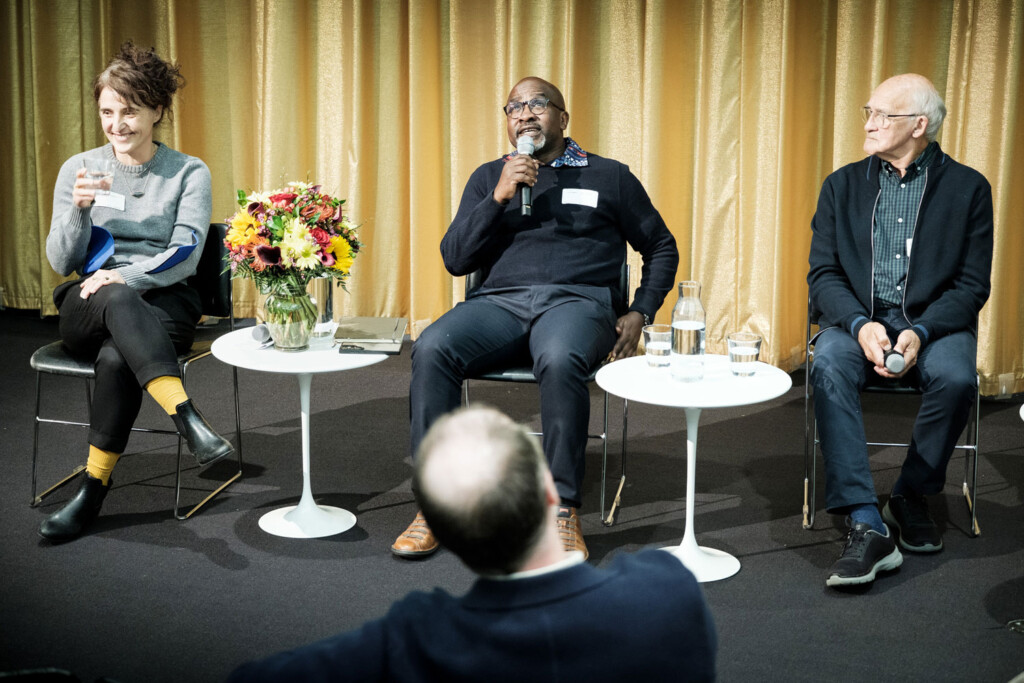
Exemplifying an alternate mode of practice, Arthur Adeya (MLA ’06) and Chelina Odbert (MUP ’07) discussed their work in the Kibera section of Nairobi, a dense, underserved slum whose needs run deeper than green space. Adeya and Odbert instead worked with members of the community to develop “productive public spaces” that offer verdant refuge but also facilities for social gatherings, economic workshops, and public health and education initiatives. While this vision of landscape architecture as community infrastructure developed in Kibera, Adeya, Odbert, and their collaborators at the Kounkuey Design Initiative (KDI) have also applied their methodology to public spaces and community development projects as far away as inland Southern California. “This is really Africa exporting landscape architecture,” said Adeya, reflecting on how their experiences in Kibera have translated to international projects.
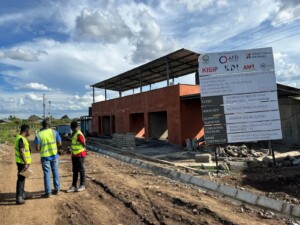
Discussions throughout the conference focused on the need to reverse the colonial logic by which Western models had long been imposed onto African settings. What would a new landscape architecture, rooted in Africa, look like? Doherty spent a recent sabbatical year traveling the continent and visiting academic institutions with landscape architecture departments. The profession itself is in a nascent stage, with only eight of 54 African nations currently home to professional associations of landscape architects. Though increasing, the number of landscape architecture programs at African universities also remains relatively small. Doherty built relationships with many of these institutions. In addition to encouraging virtual participation at the live-streamed conference, he has invited students in Africa to participate in his GSD class as guest speakers.
Still, as speakers on the “Pedagogies” panel emphasized, the growth of academic programs also needs to be matched by the development of an African-centric curriculum. Finzi Saidi of the University of Johannesburg confronted this question as he described his work with Unit 15x at his university’s Graduate School of Architecture. He and his colleagues research “landscapes in post-colonial African societies to propose culturally appropriate designs” reflecting the dynamic conditions of contemporary Africa. Yet within nations grappling with the legacies of colonialism, what might be the basis for such designs? Doherty recalled a workshop that included Saidi and Sechaba Maape of University of the Witwatersrand. The latter relayed his students’ complaints that they were being taught to design cities for white people. Maape responded with a challenge: “Show me what a city for Black people is like.” The answers Maape presented made reference to ancient African ritual spaces, proposing answers to contemporary ecological problems while invoking deeply ingrained spiritual practices that connected people to the land.
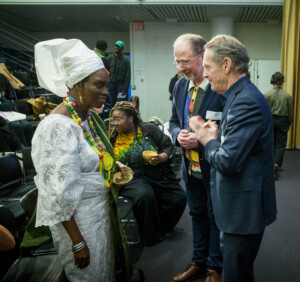
Indeed, the theme of spirituality in landscape design ran through the conference, invoked in the opening session by Jacob K. Olupona, Hugh K. Foster Professor of African and African American Studies and Professor of African Religious Traditions, and chair of the Department of African and African American Studies. Olupona noted that the conference built upon a 2019 gathering at the GSD, also organized by Doherty, focused on the tradition of sacred groves, which are prevalent in West Africa and also maintained by descendants of Africans in Brazil. Forests stewarded by people for the purpose of spiritual expression, sacred groves offer one touchstone for reimagining African landscape architecture in general. The sacred felt viscerally present in the conference from the start as Princess Adedoyin Talabi Faniyi of the Osun Sacred Grove in Osogbo, Nigeria, offered a Yoruba blessing for the proceedings. She also spoke later that night as part of the International Womxn’s Day Keynote event alongside Tarna Klitzner, a designer based in Cape Town, and moderator Zoe Marks, director of the Harvard Center for African Studies. The Princess movingly described how the forests, rivers, and terrain that she oversees “acknowledge the interconnectedness of nature and spirituality.”
This spiritual connection to nature can also serve as the basis for a sharper critique of contemporary political economy and historical power imbalances. Olatunji Adejumo of the University of Lagos argued that Western Enlightenment philosophy, imported to Africa, had informed colonial uses of the land. Adejumo drew a contrast between “Spiritscapes,” defined by a biocentric philosophy and local knowledge, and the extractive logic underpinning the “Resourcescapes” that Africa had become in the colonial imagination. Turning to African traditions and precedents for her own work championing regenerative agriculture and environmental stewardship in the Lake Victoria region, Lenneiye invoked figures like Thomas Sankara, who planted 10.5 million trees in Burkina Faso in the 1980s; Wangari Mathaai, who encouraged women to learn forestry skills in Kenya; and Zephanaiah Phiri, a water harvesting advocate in Zimbabwe. These historical precedents suggest a rich basis for sustainable landscape practices in Africa in the future, what Lenneiye described as “locally relevant, community informed adaptation plans that integrate African environmental philosophies and practices.”
While looking ahead to a future when these philosophies and practices might thrive throughout the continent, “African Landscape Architectures” also featured inspiring examples from the present. Joe Christa Giraso of Mass Design Group, based in Boston and Kigali, Rwanda, provided an overview of the meticulous research that went into the designed landscape for the Ellen DeGeneres Campus of the Dian Fossey Gorilla Fund. Through this scientifically informed landscape design, the campus’s stunning natural setting also became an active research site for reforestation techniques in Rwanda.
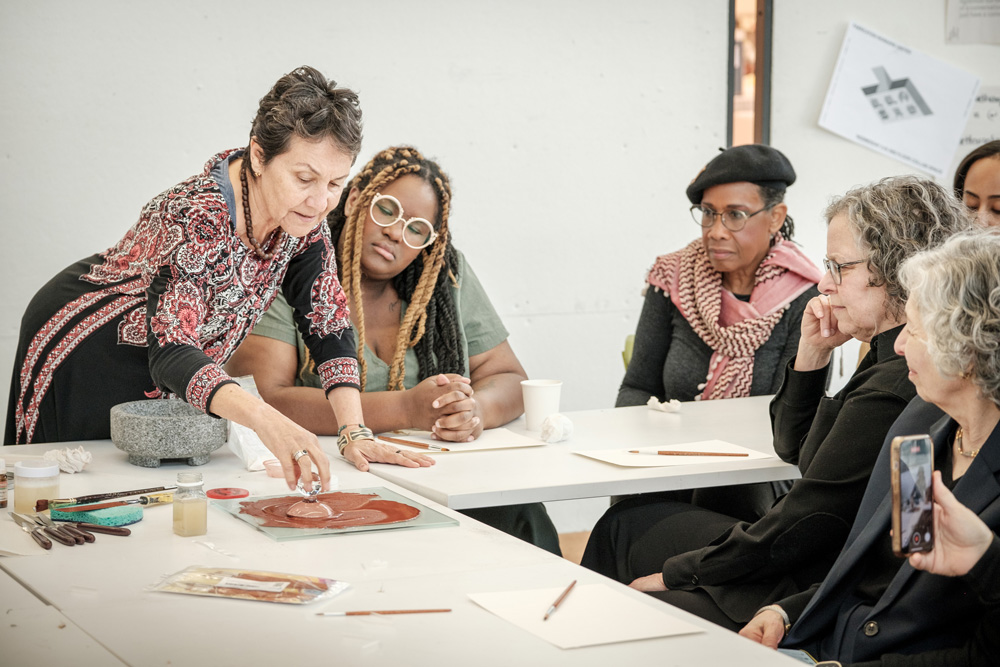
As the scholars and practitioners at the conference made clear, landscape architecture is a growing discipline within Africa, but also a porous one. Makhzoumi, who is also acting president of the International Federation of Landscape Architects, the Middle East Region, argued, “I don’t think landscape is the domain of Landscape Architects.” The alternative futures for the field charted in the conference suggest a new kind of hybridity in line with Makhzoumi’s flexible notion. Through the discussions, it became possible to imagine landscapes in Africa guided by spiritual leaders, artists, agriculture specialists, planners, philosophers, and various communities in partnership with an emerging generation of professionals.
